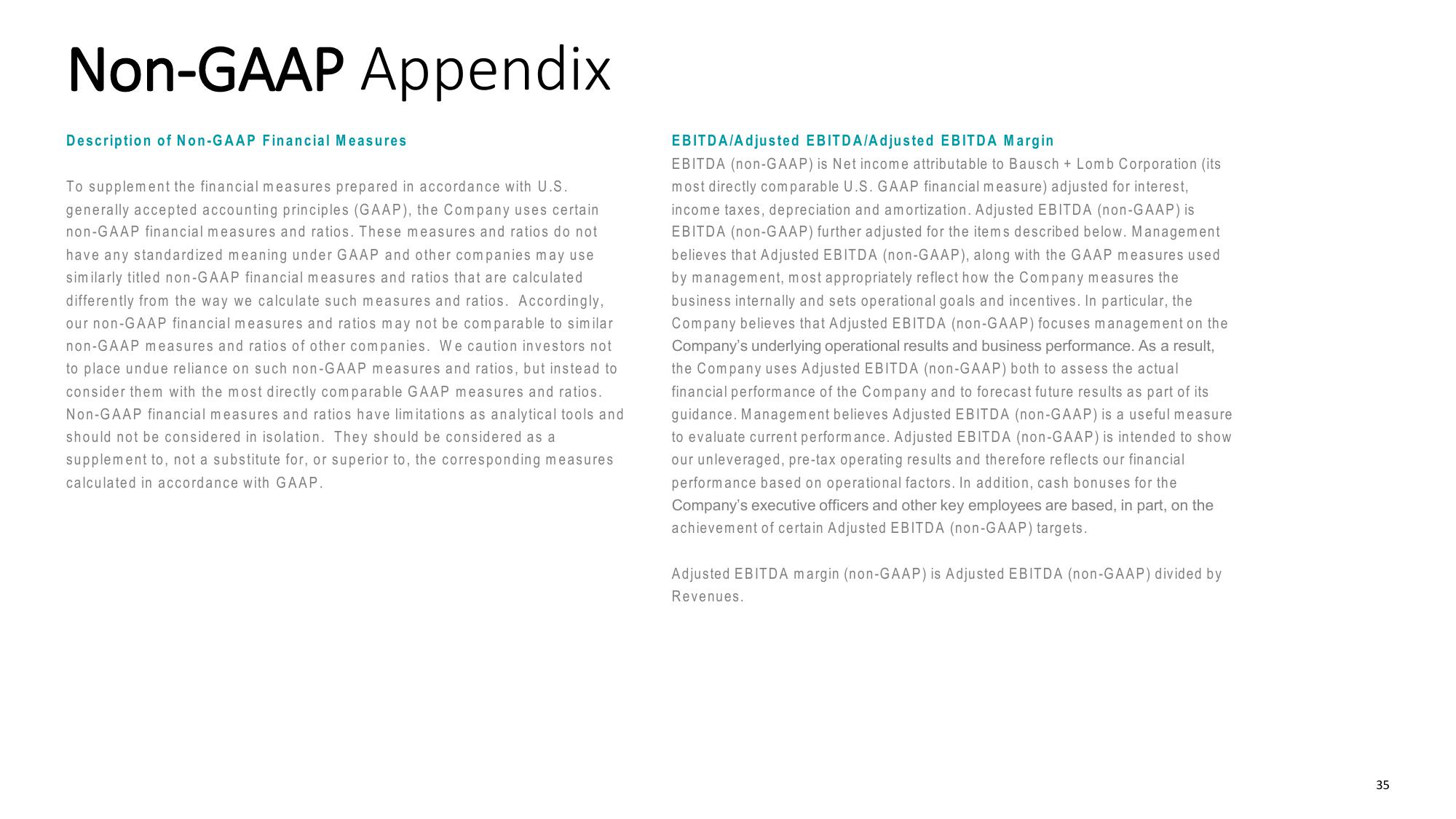Bausch+Lomb Results Presentation Deck
Non-GAAP Appendix
Description of Non-GAAP Financial Measures
To supplement the financial measures prepared in accordance with U.S.
generally accepted accounting principles (GAAP), the Company uses certain
non-GAAP financial measures and ratios. These measures and ratios do not
have any standardized meaning under GAAP and other companies may use
similarly titled non-GAAP financial measures and ratios that are calculated
differently from the way we calculate such measures and ratios. Accordingly,
our non-GAAP financial measures and ratios may not be comparable to similar
non-GAAP measures and ratios of other companies. We caution investors not
to place undue reliance on such non-GAAP measures and ratios, but instead to
consider them with the most directly comparable GAAP measures and ratios.
Non-GAAP financial measures and ratios have limitations as analytical tools and
should not be considered in isolation. They should be considered as a
supplement to, not a substitute for, or superior to, the corresponding measures
calculated in accordance with GAAP.
EBITDA/Adjusted EBITDA/Adjusted EBITDA Margin
EBITDA (non-GAAP) is Net income attributable to Bausch + Lomb Corporation (its
most directly comparable U.S. GAAP financial measure) adjusted for interest,
income taxes, depreciation and amortization. Adjusted EBITDA (non-GAAP) is
EBITDA (non-GAAP) further adjusted for the items described below. Management
believes that Adjusted EBITDA (non-GAAP), along with the GAAP measures used
by management, most appropriately reflect how the Company measures the
business internally and sets operational goals and incentives. In particular, the
Company believes that Adjusted EBITDA (non-GAAP) focuses management on the
Company's underlying operational results and business performance. As a result,
the Company uses Adjusted EBITDA (non-GAAP) both to assess the actual
financial performance of the Company and to forecast future results as part of its
guidance. Management believes Adjusted EBITDA (non-GAAP) is a useful measure
to evaluate current performance. Adjusted EBITDA (non-GAAP) is intended to show
our unleveraged, pre-tax operating results and therefore reflects our financial
performance based on operational factors. In addition, cash bonuses for the
Company's executive officers and other key employees are based, in part, on the
achievement of certain Adjusted EBITDA (non-GAAP) targets.
Adjusted EBITDA margin (non-GAAP) is Adjusted EBITDA (non-GAAP) divided by
Revenues.
35View entire presentation